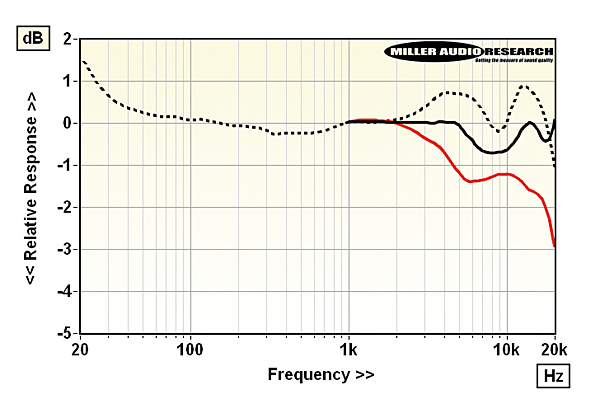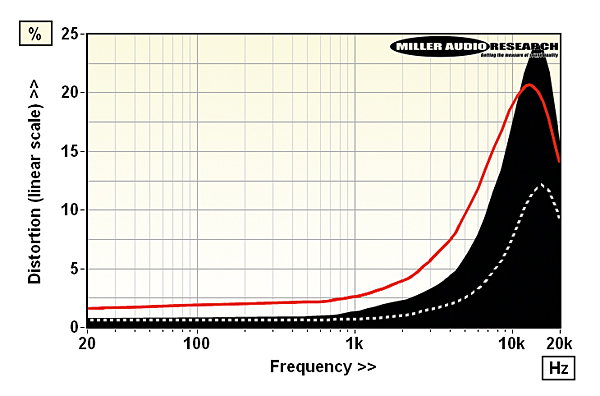AVID Ionic Cartridge Lab Report
While AVID's Reference Ruby [HFN Nov '20] and Boron [HFN Apr '21] are very similar MC designs, differing principally in cantilever material, the 'entry-level' Ionic is arguably more distinct in its construction. The line contact stylus used in the Ruby/Boron is replaced here with an elliptical type offering a 7.6x15.5µm contact radius and is aligned on the end of a long alloy tube cantilever to achieve a 25° VTA – preferable to the high 30° of its costlier relatives. At a 2g downforce it's not quite as secure a tracker as the top Ruby Reference, achieving ~70µm via the left/right channels and just letting go at the penultimate +15dB groove modulation (re. 315Hz/5cm/sec) at ~1% THD, but this is still a good performance bearing in mind the low ~11cu compliance. Also, while AVID quotes a consistent 4.5ohm coil impedance and 0.32mV/1kHz (re. 5cm/sec) output for all three cartridges in the range, in practice our Ionic had a slightly lower 0.26mV output, complemented by a very tight 0.1dB channel balance and 20-25dB (20Hz-20kHz) stereo separation.
The specific resonances and damping properties of the alloy tube cantilever are revealed in the extended but slightly erratic HF response [Graph 1, below] and in the relatively high HF distortion, reaching ~18%/14kHz on the stereo cut [–8dB re. 5cm/sec; dashed trace, Graph 2]. The slight asymmetry we've seen before in AVID's generator is revealed again here in the flatter/brighter right channel (–1.1dB vs. –2.3dB/20kHz) and in the 1-2dB dip in presence band output on vertical (L-R) grooves vs. lateral (L+R) cuts [red vs. solid black trace, Graph 1]. However, compared with most pick-ups equipped with alloy cantilevers, the Ionic offers a bold treble. PM


| Generator type/weight | Moving-coil / 9.1g |
| Recommended tracking force | 18-22mN (20mN) |
| Sensitivity/balance (re. 5cm/sec) | 259µV / 0.1dB |
| Compliance (vertical/lateral) | 11cu / 9cu |
| Vertical tracking angle | 25 degrees |
| L/R Tracking ability | 70μm / 70μm |
| L/R Distortion (–8dB, 20Hz-20kHz) | 1.3–18% / 0.7–12% |
| L/R Frequency resp. (20Hz-20kHz) | +1.9 to –2.3dB / +1.2 to –1.1dB |
| Stereo separation (1kHz / 20kHz) | 25dB / 20dB |
| Price | £2000 |


















































